Long known simply as the “500,” the Indianapolis 500-Mile Race has been conducted continuously at the since its inception in 1911, except for 1917-1918 and 1942-1945 when the United States was at war.
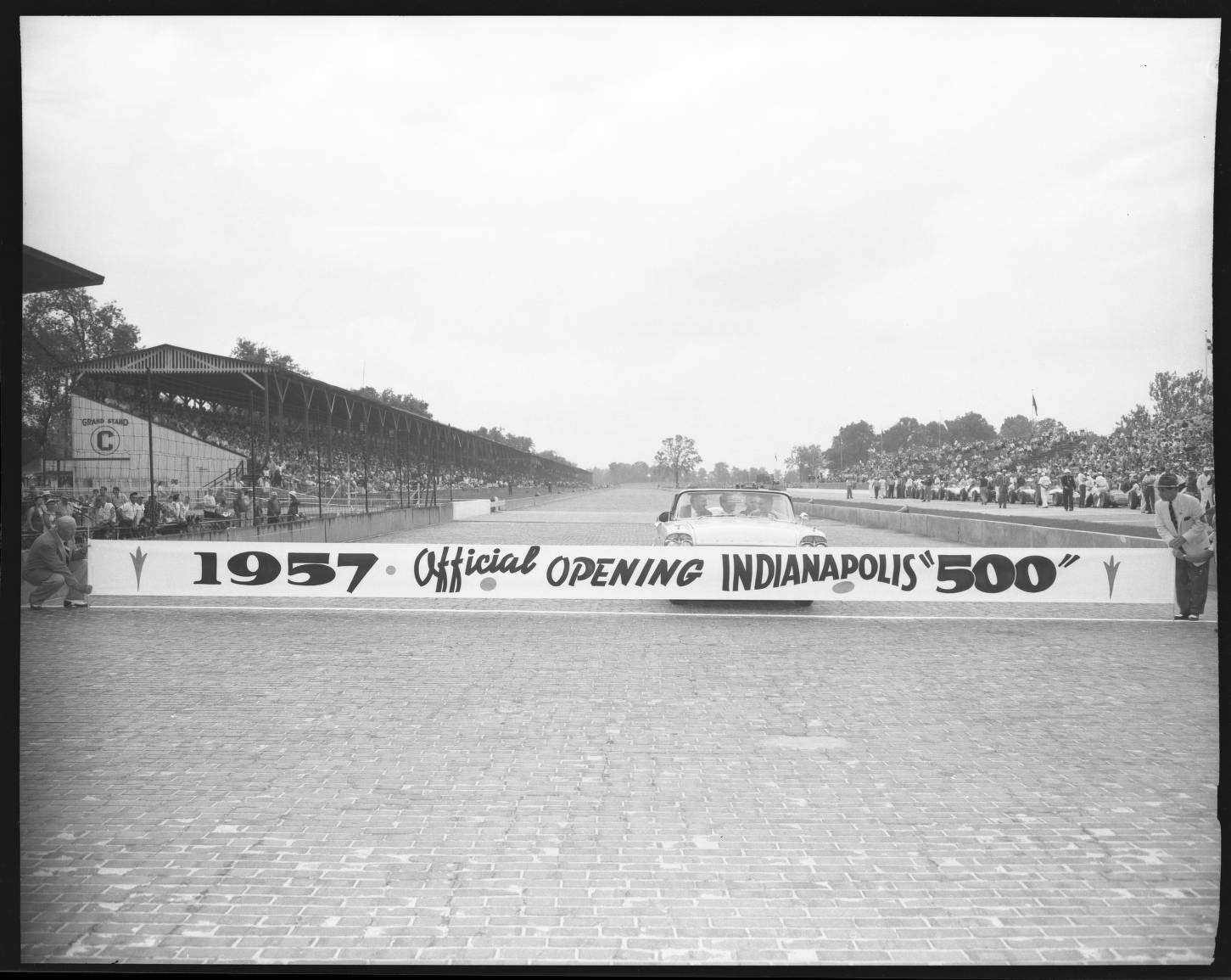
After eight days of racing in 1910, each packed with dozens of events and spread over the holiday weekends of Memorial Day, Fourth of July, and Labor Day (some of which were poorly attended), track founders , , , and decided for 1911 to experiment with a single event of marathon proportions, offering a huge purse. After briefly weighing the merits of a 24-hour event, they reasoned that something lasting around seven hours would be far more acceptable to spectators. They agreed upon a 500-mile race with a purse of $25,000 for the first 12 finishers, with $10,000 going to the winner. The American Automobile Association (AAA) Contest Board, established in 1902, sanctioned the race.
The track was available for practice for the entire month of May 1911, although many contestants did not arrive until the third and fourth week. Time trials were conducted on May 27 and 28 to sort out the slower cars. An average speed of 75 miles per hour (from a flying start) for a quarter of a mile down the main straightaway was required in order to earn a starting position.
Forty cars met the requirements, lining up for the race in rows of five (rather than the later three) and in the order in which each had been entered. The first row actually contained only four starters, with Carl Fisher occupying what would become known as the “pole” position (inside, front row) with a Stoddard-Dayton passenger car. Fisher felt that 40 cars were too many for the customary standing start, so his plan was to lead the field around on a single unscored lap at about 50 mph to begin the race. This is believed to have been the first mass rolling start for an automobile race anywhere in the world and quite possibly the first use of a pace car at a major event.
The 1911 race was won in just over six hours and 42 minutes by (with about an hour of midpoint relief driving by Cyrus Patschke) in a locally built . But already Fisher’s original concept for the track’s competitions was being circumvented. Although the second-placed Lozier was a standard production car, modified only slightly for the race, the winning Marmon was largely a “one-off” or specially created racing car, built in one corner of the Marmon passenger car factory. Because no rule required a riding mechanic (which everyone was using routinely), the team designed a streamlined, single-seat body.
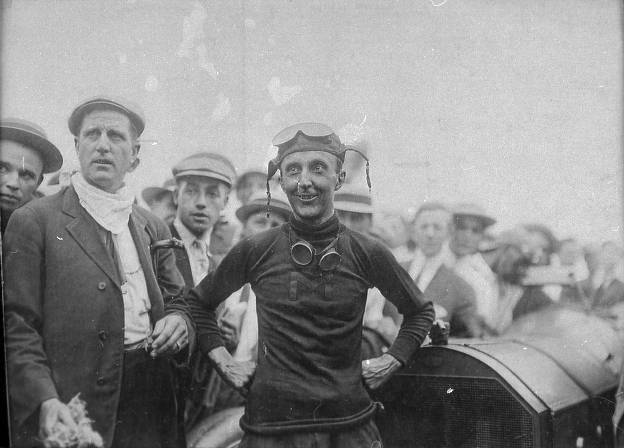
The car made history when, in response to critics with regard to safety, Harroun installed above the cowling (bodywork covering an automobile’s engine) what may well have been the first rearview mirror ever used on an automobile. As far as the public was concerned, however, the car was a standard Marmon, and passenger car sales picked up so appreciably that the firm decided to end its racing program with this notable victory. Vehicles entered in the 500, however, eventually became known as “open-wheeled,” because they characteristically were designed with wheels outside their bodies rather than under fenders.
For 1912, prize money doubled to $50,000, with the winner guaranteed $20,000. In fact, several accessory companies were already posting additional amounts, contingent upon the use of their products. Harroun actually earned $4,250 above the Speedway’s prize in 1911. Joe Dawson’s winning in 1912 was much closer to its street version than had been Harroun’s Marmon and, for the second year in a row, a local manufacturer had triumphed. National also withdrew from racing following the resulting boost in sales.
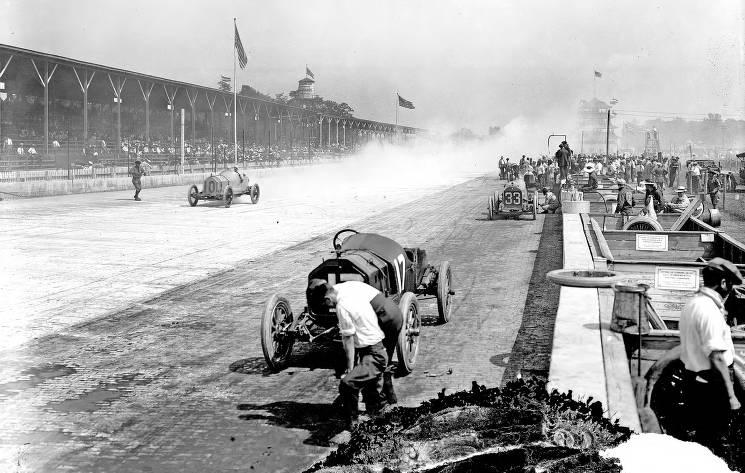
While foreign cars and drivers had participated in the first two 500s, the cars had been American-owned and the overseas drivers all immigrants. In 1913, however, several foreign teams made the transatlantic trip specifically to compete in the race, and Jules Goux in a French Peugeot was triumphant. The following year continental drivers piloted French cars to the first four places, while foreign cars and drivers also won in 1915 and 1916. Howard (Howdy) Wilcox of Indianapolis won in 1919, but his car was foreign, although locally owned. It was a Peugeot entered by the Indianapolis Speedway Team Company (actually, Fisher and Allison) and prepared during the spring on Main Street in in what became Allison’s Plant One.
American cars began winning again in 1920, but racing had become very specialized and even firms like Duesenberg (which had relocated from Elizabeth, New Jersey, to Indianapolis in 1920) were now building 100-percent racing cars for competition. The most successful and prolific builder of both cars and engines was Harry Miller of Los Angeles, a racing specialist who did not offer a passenger car in any form at all.
Engine sizes were reduced several times in an attempt to curb speeds, but seemingly at a slower rate than the progression of technology. Cubic inch displacement (cid) was cut from a maximum allowable 600 cid in 1911 and 1912 down to 450 for 1913 and 1914; then to 300 for 1915-1919, 183 for 1920-1922, and 122 for 1923-1925. Seven drivers turned single-lap qualifying runs in excess of 100 mph in 1919, and after the introduction of four-lap qualifications in 1920, a single lap at almost 115 mph was attained in 1925.
Riding mechanics were no longer mandatory in 1923, which coincided with the initial appearance of superchargers on the three-car Mercedes team, a method of achieving additional power. Brothers used supercharging on their winning cars in 1924 and 1925. In terms of speed, the first three finishers in 1925 each completed the 500 miles in under five hours, thus averaging better than 100 mph for the entire distance.
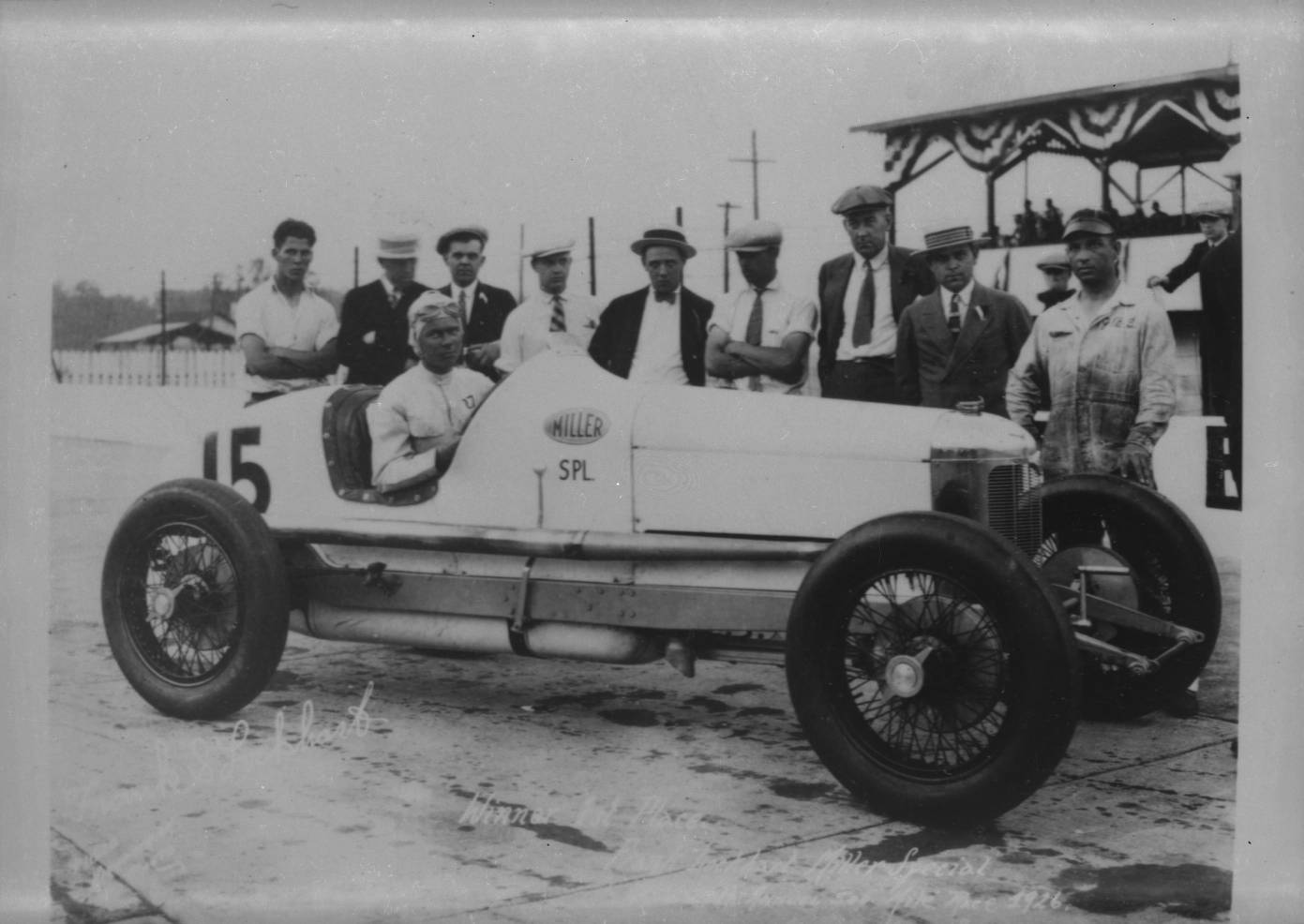
Practically every car was supercharged by 1926 as engine size was reduced still further to only 91 ½ cubic inches. Frank Lockhart, who drove for the racing team and set land speed records in addition to driving in the 500, responded by lapping at 120 mph in 1927, and in 1928 Leon Duray (real name: George Stewart) managed a qualifying lap at over 124 mph. A 60 cid formula was discussed for 1930, but drastic changes took place instead. In an attempt to lure back the automobile companies (now mostly located in Detroit), supercharging was eliminated (except for two-cycle engines) and the cubic inch displacement was increased to 366 so as to encompass most passenger car engines of the day. Riding mechanics were reintroduced and the starting field increased to 40, from the previous 33 (1 car for every 400 feet of track).
But the 1929 Wall Street crash took its toll, and of the 38 cars that started in 1930 not one was fully factory backed. The field consisted of detuned racing cars of the previous years (modified to carry a mechanic), and a few inexpensive, privately entered production efforts. Studebaker (of South Bend, Indiana) fielded a five-car team in 1932 and 1933, while Ford ambitiously teamed up with Harry Miller to build 10 cars for 1935. But it was the older Millers that kept winning during the Great Depression years. Studebaker did place a few cars within the first 10, topped by a third in 1932, but Ford managed to qualify only 4 of its cars in 1935 and none of them finished. The factories were out of it for the time being by 1937, and supercharging was permitted once again. Jimmy Snyder turned a qualifying lap at over 130 mph. A year later the riding mechanics were gone for good.
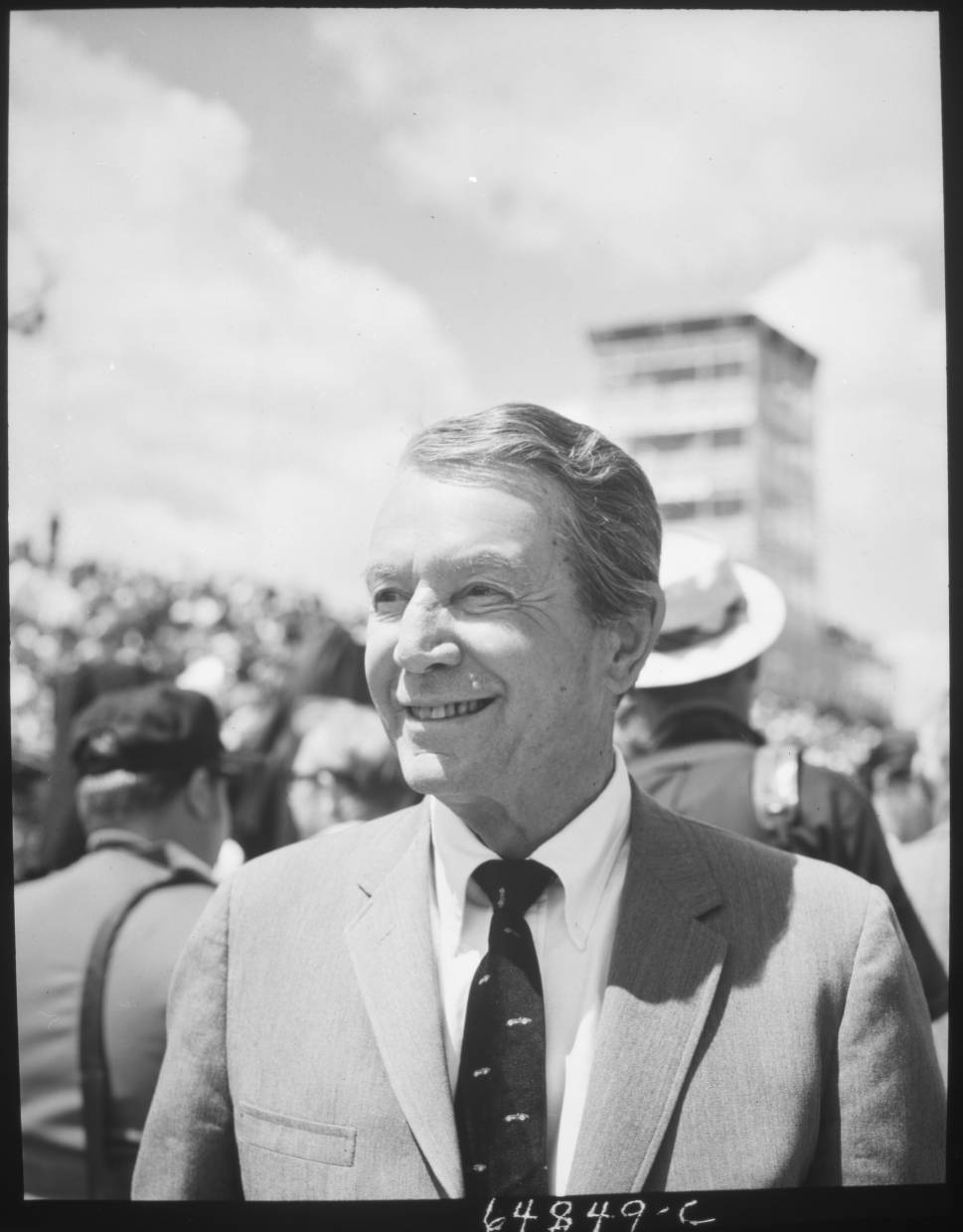
Among drivers, Tommy Milton became the first two-time victor by winning in 1921 and 1923. Louis Meyer, the 1928 champion, won his second 500 in 1933, then became a three-time winner in 1936. quickly duplicated Meyer’s feat and, with triumphs in 1937, 1939, and 1940, was the first to score in consecutive years. Following World War II, Terre Haute entrepreneur purchased IMS and revived it with Shaw at his side as track president and general manager.
Following a number of victories by cars utilizing front-wheel drive, including the 500s of 1947-1949, lightweight rear-drive cars began to succeed, ushering in a trend of low-slung creations with engines offset to the left and driver cockpits offset to the right. Because their front portions in particular strongly resembled road-going sports cars, these cars were nicknamed “roadsters,” somewhat of a misnomer.
When a 1955 disaster at the 24-hour Lemans race in France killed 84 people and nearly 180 spectators, the AAA Contest Board that had always sanctioned the 500 dissolved. Contest Board members also cited the death of Indianapolis 500 racecar driver Bill Vukovich at IMS as a reason for their withdrawal from racing. Hulman, Indianapolis businessman , and others stepped in to fill this void, establishing the (USAC) to act as the governing body for the 500 beginning in the off-season in fall 1955.
Several successful experiments began in 1957 at tilting the perennially victorious four-cylinder Offenhauser engine (derived from the Miller) on its side for a lower center of gravity. (Miller had gone into bankruptcy in 1933. His shop foreman Fred Offenhauser and designer Leo Goosen bought his designs and went on to improve and produce them under the Offenhauser name.) While a smattering of rear-engined cars appeared between 1937 and 1951, only a few qualified and none ever finished. Then, in 1961, Australian Jack Brabham (defending two-time World Champion at the time) placed ninth, driving a British Grand Prix-based Cooper powered by a Coventry-climax engine mounted behind the driver. Two years after that, Scotsman Jim Clark placed second with an American Ford-powered, British rear-engined Lotus, and in 1965 Clark won. Thus, A. J. Foyt’s 1964 win was the last ever by a front-engine car, and after 1968 no front-engined car would ever start again.
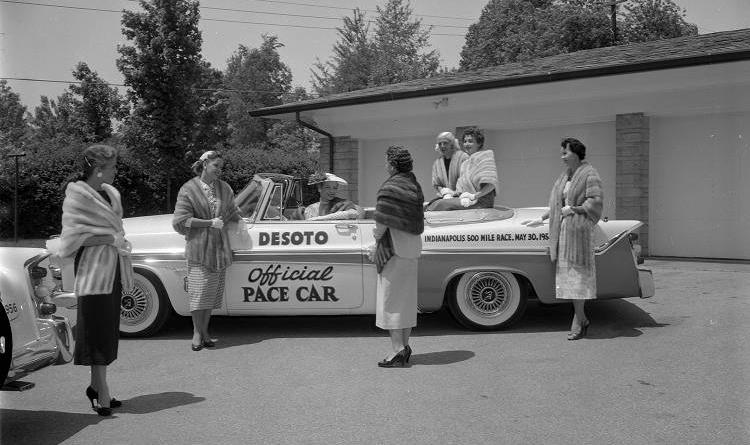
A variety of factors, including turbocharged engines, considerably wider tires, computer-designed aerodynamic bodies, and front-and rear-mounted stabilizer wings, caused speeds to soar after the mid-1960s. From a lap of 150 mph by Parnelli Jones in a front-engined car in 1962, Tom Sneva was able to record 200 mph in 1977, and in 1996, Arie Luyendyk officially exceeded one lap at 237.4 mph. The race record itself, down to two hours, 41 minutes by Arie Luyendyk in 1990, represented an average speed of 185.981 mph for 500 miles. This held all the way until 2013 when Brazilian driver Tony Kanaan was home in just a few ticks of the watch over 2 hours and 40 minutes to average 187.433 mph.
Notable advancements were made for the safety of drivers, once a widely publicized negative of the 500. During the race itself, 13 drivers lost their lives through 1964. Only one race-day-related driver fatality occurred between 1964 and 1972.
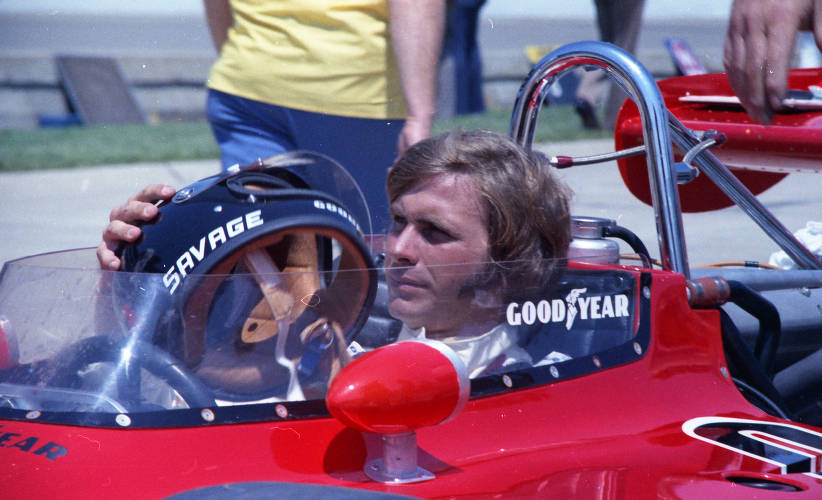
The 1973 race, however, was the deadliest in its history—2 drivers—Art Pollard and Swede Savage—were killed and 11 spectators were injured. Racecar owners, drivers, crew, and track owners called for immediate changes from USAC.
For the rest of the 1973 racing season, the rear wings that driving teams had used in 1972-1973 were cut back in size, fuel-tank size was reduced—both measures were put in place to reduce car speeds. Crew members also were restricted from leaving their posts with pit signs during the race.
Blame for the 1973 race disaster fell to its chief steward, Harlan Fengler had lifted the 180-mph speed limit that resulted in speeds climbing quickly, although many safety concerns fell outside of his control. Six days before the 1974 race, Indianapolis businessman and USAC founder Tom Binford became chief steward of the 500-mile race. He made several procedural changes and worked to upgrade the track to make the race safer. The angled inside wall located at the northwest corner of the track, which had led to the 1964 fatality, was removed; the pit entrance was widened; retaining walls and catch fences were improved; and a flag stand for the race starter was built over the start-finish line. Spectator seating close to the track was removed.
In 1979, a group of racing owners disagreed with the direction and leadership of USAC. They formed their own sanctioning body, the Championship Auto Racing Teams (CART). Led by car owners rather than a neutral body, CART established and sanctioned the Indy Car World Series. USAC continued to be the sanctioning body for the Indianapolis 500 and for other races in its championship series. USAC rejected entries from some CART owners that year, though they won a court injunction. Throughout the 1980s, USAC and CART ran competing world championship series, but many CART drivers continued to compete in the 500. Many teams defected from USAC, and for 1981-1982 the CART championship became the preeminent national championship. USAC stopped sanctioning any race except the 500, and CART ran the national championships.
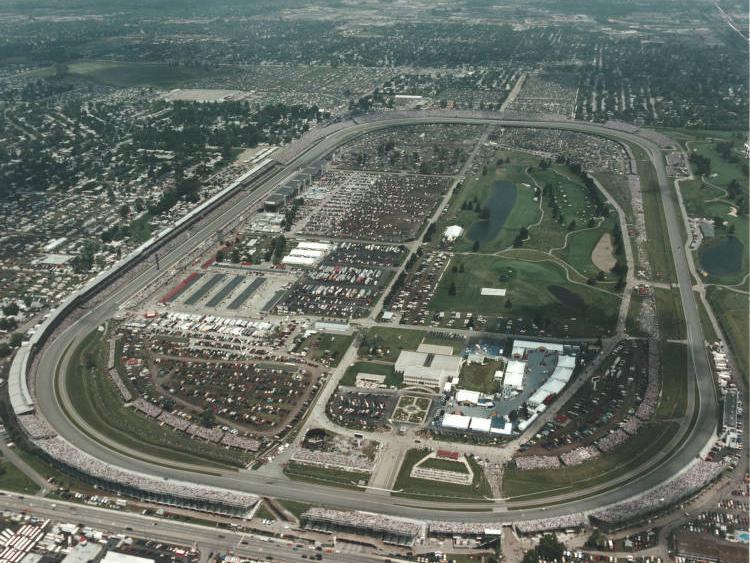
Prize money for USAC’s Indianapolis 500 made extraordinary leaps in the 1980s. The total purse in 1970 exceeded $1 million for the first time. It then topped $2 million in 1982, $3 million in 1985, $4 million in 1986, $5 million in 1988, and $6 million in 1989, at which time Brazilian winner Emerson Fittipaldi’s first-place prize alone exceeded $1 million.
By 1992, CART was encountering opposition to its organizational structure in the face of concerns about costs, competitiveness, and revenue sharing. The company rebranded as IndyCar, but it ultimately failed. In 1996, Anton Hulman (Tony) George, then IMS owner, founded Indy Racing League (IRL) as direct competitor of CART/IndyCar. IRL took control of the Indianapolis 500 and established its own oval-based racing series. IRL became dominant, and CART/IndyCar went bankrupt at the end of the 2003 season. Although 3 race team owners acquired its assets and tried to revive CART/IndyCar, it merged with IRL in 2008, reuniting the American open-wheeled racing circuit.
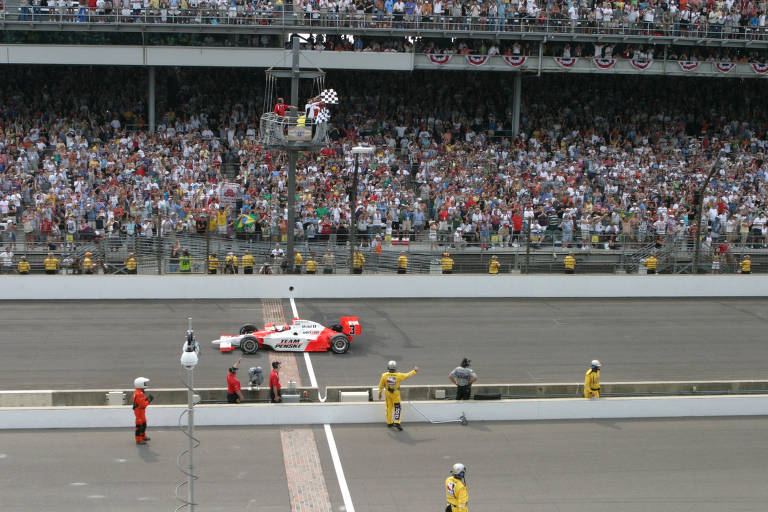
The 500 purses continued to increase in value into the new century, the totals often fluctuating due to the amount of “contingency” prize money posted and earned. The current record for the overall race purse stands at $14,406, 580, paid in 2008, while the record for the winner’s share is $3,048, 005 earned in 2009 for the mighty team Penske by Helio Castroneves, the popular three-time winner from Brazil.
Attendance figures, although unofficial (the Motor Speedway does not release this information), are similarly impressive. The race is reputed to be the largest single-day sporting event in the world, with estimates of the crowd size in some years having exceeded 400,000.
As worldwide exposure of the 500 increased, hand-in-hand with technological advances, rising speeds, and increased involvement in recent years by both automotive and non-automotive international corporations, a variety of socially intriguing “firsts” have taken place. In 1977, the year in which A. J. Foyt became the first four-time winner, the field included its first female driver, Janet Guthrie. There have since been eight more, Danica Patrick having the highest finish with third in 2009. When Al Unser (later to join Foyt as a four-time winner) lined up against Al Unser Jr., in the 1983 race, it marked the first instance of a driver competing in a 500 against his own son. Back in 1937 Billy Devore had been the first second-generation driver to compete in a 500; in 1988 Billy Vukovich III followed in the footsteps of his father and grandfather to become a third-generation 500 driver.
In terms of four-time winners, there have now been four, Rick Mears (1979, 1984, 1988, 1991) joining Foyt (1961, 1964, 1967, 1977), Al Unser (1970, 1971, 1978, 1987), and Helio Castroneves (2001, 2002, 2009, 2021), while the record for a car entrant is an astonishing eighteen, by Roger Penske between 1972 and 2019. The three-time winning drivers have been: Louis Meyer (1928, 1933, 1936), Wilbur Shaw (1937, 1939, 1940), Mauri Rose (1941, 1947, 1948), Bobby Unser (1968, 1975, 1981), Johnny Rutherford (1974, 1976, 1980), and Dario Franchitti (2007, 2010, 2012).
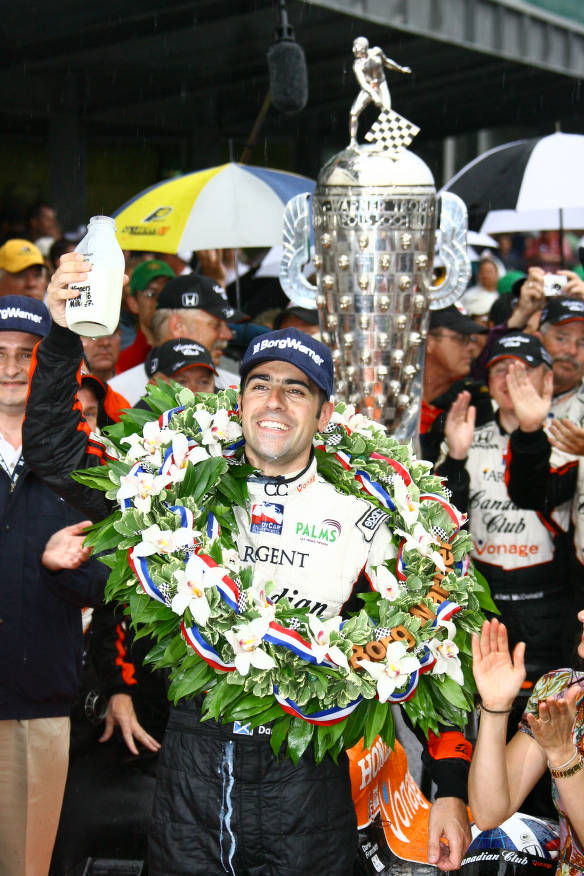
For the 75th running in 1991, the field expanded its horizons still further by containing its first African American driver, Willy T. Ribbs, as well as its first from Asia, Hiro Matsushita from Japan. In 2017, it was a Japanese driver, Takuma Sato, who won. He won a second time in 2020. The field has included several Latin American drivers, including Fittipaldi and Castroneves. Efforts to improve racial diversity at the track, however, have been very slow.
Successful businessman and 18-time, 500-winning-car entrant Roger Penske acquired the Speedway in January 2020, becoming its fourth owner. In July 2020, following the Black Lives Matters protests that took place across the U.S. and in Indianapolis following the death of George Floyd in Minneapolis, IMS announced that it was embarking on an effort to “support diversity and inclusivity,” providing a $1 million fund called “Race for Equality & Change” to increase diversity across all portions of the Speedway’s working teams.
The Novel Coronavirus (COVID-19) pandemic caused the 2020 running of the 500 to be delayed from its traditional Memorial Day Weekend date to August 23, 2020. The race also ran without spectators in the grandstands.

Help improve this entry
Contribute information, offer corrections, suggest images.
You can also recommend new entries related to this topic.